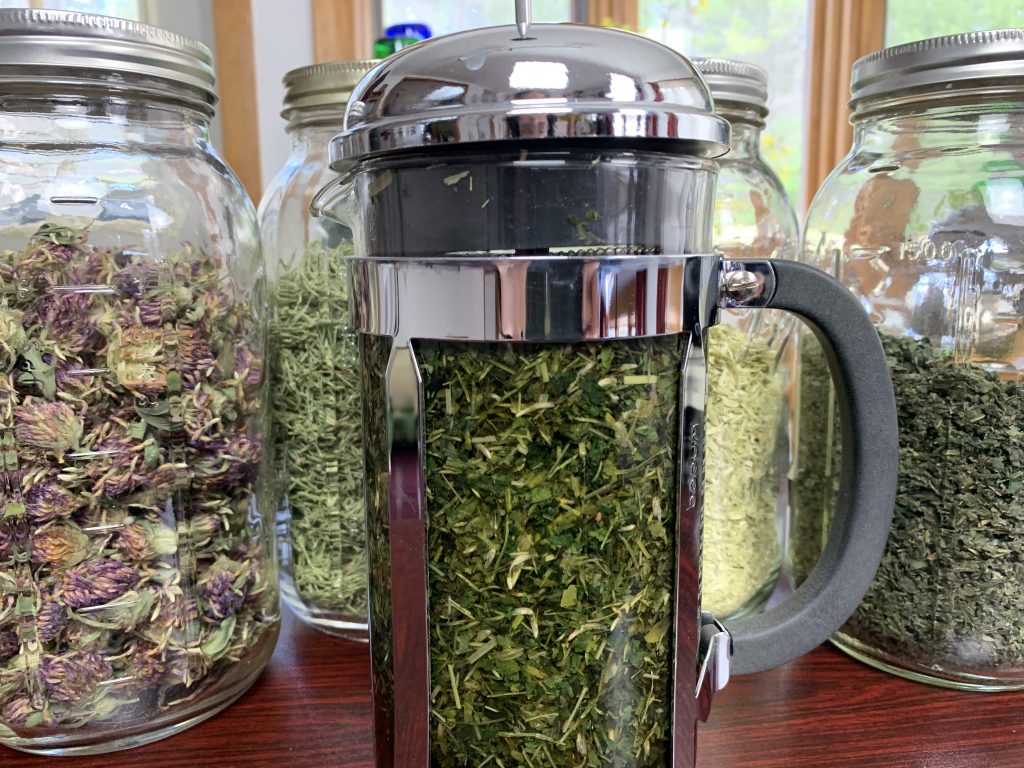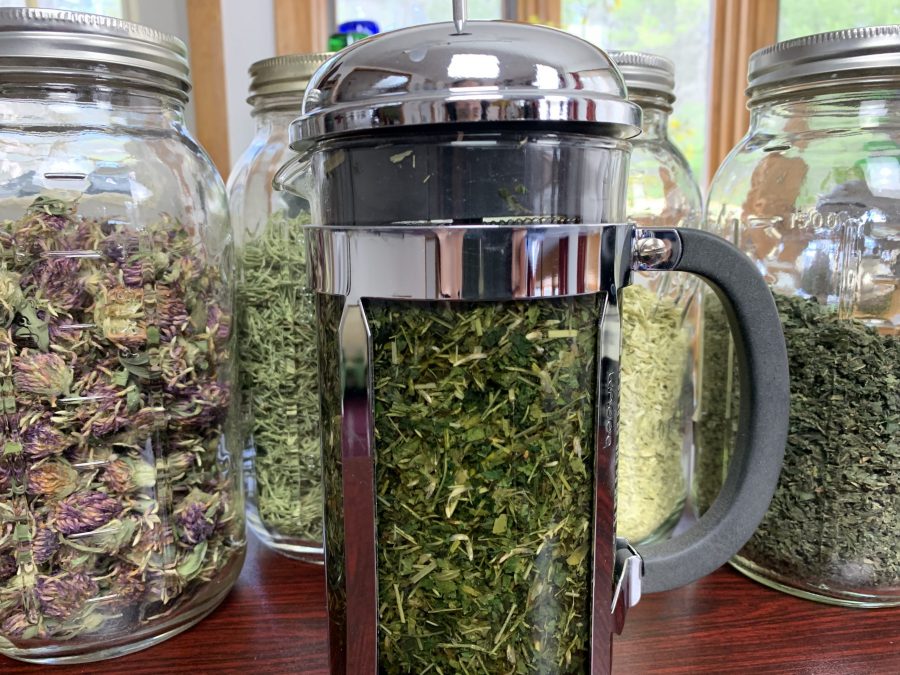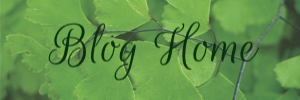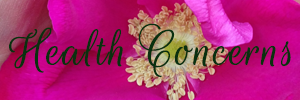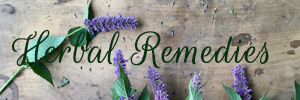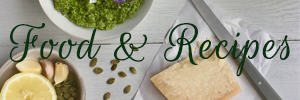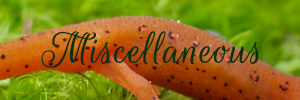Mineral-dense herbs particularly lend a hand in supporting strong bones as well as hair, skin, and nails, yet they may also improve energy, vitality, endocrine/hormone balance, immune function, wound repair, and so much more.
Jump to Recipes:
- Strong Nourishing Infusion
- NutriTea
- NutriChai
- Nettle Ice Cubes
- Dandelion Weed Pesto
- Nutrient-Rich Broth
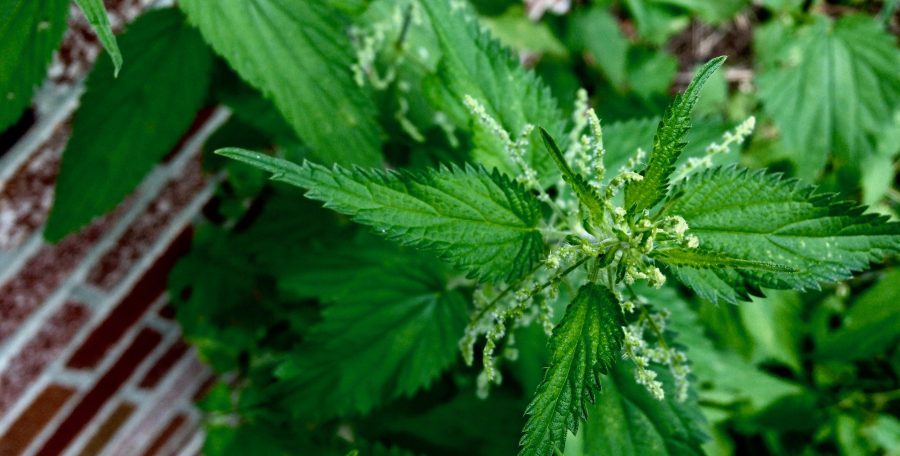
Key Herbs for Nutrition & Bone Density
This is just a quick overview of my favorites!
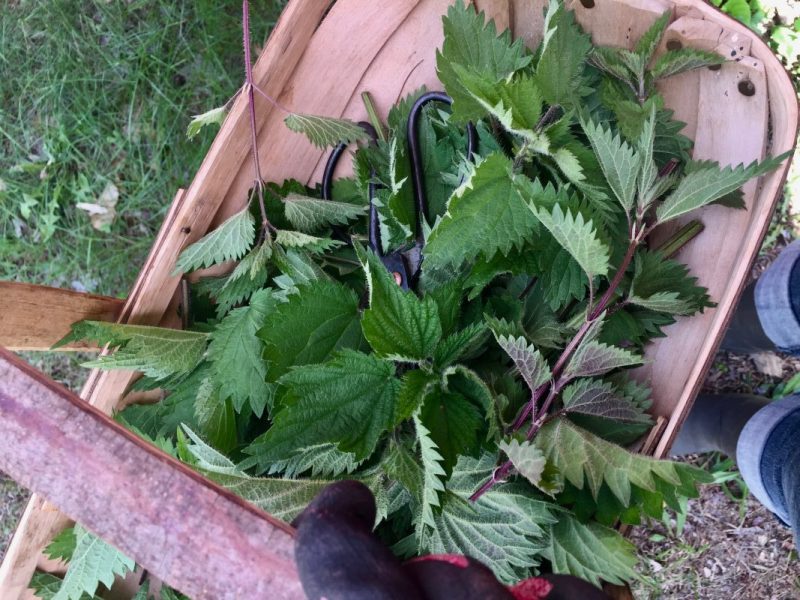
Nettle (Urtica dioica and other species): Particularly rich in calcium, vitamin K, potassium, plus many other nutrients including silica magnesium. Nettle also supports decreased inflammation and acidity throughout the body, which may help reduce bone loss. Preliminary animal studies suggest it has a direct bone-regenerative action as well. It’s easiest to identify in flower, but we actually use it in its pre-flowering spring growth state. The flavor is green, earthy, and vegetal, and it can be quite diuretic.
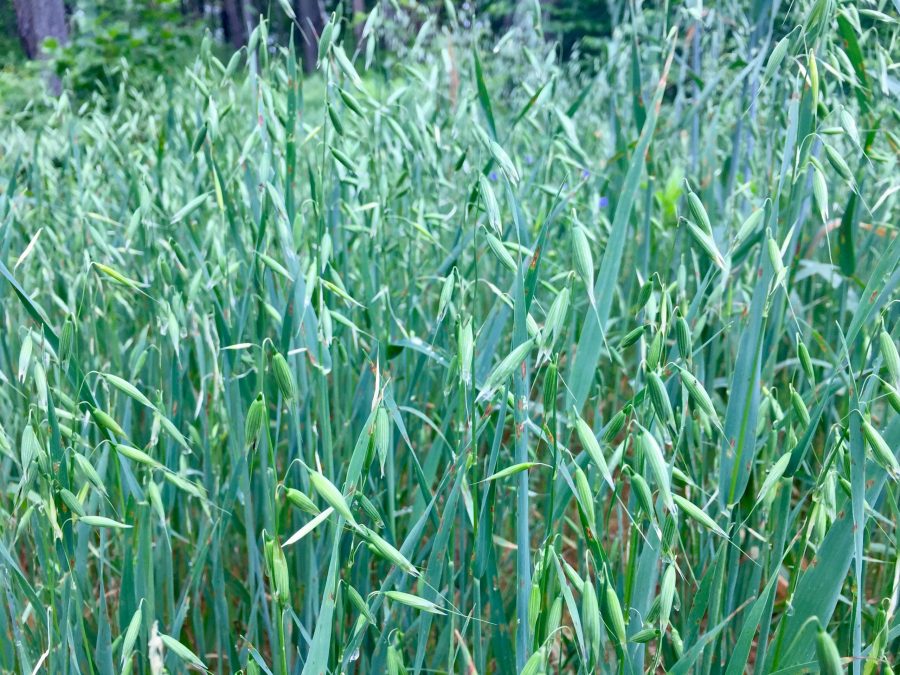
Oat Straw (Avena sativa): The delightful light green “straw” of the oat plant has approximately three times more calcium, five times more magnesium, and 67 times more silica than oatmeal. Together these three minerals support bone strength, resilience, and resistance to breaks as well as general hair, skin, and nail vitality. The flavor is pleasant and hay-like, easily blended with more flavorful herbs in tea or broth. You can’t chew/eat these grassy leaves (leave that to cows and other ruminants), so you should strain it out or perhaps powder it. Avoid if you’re allergic to oats.
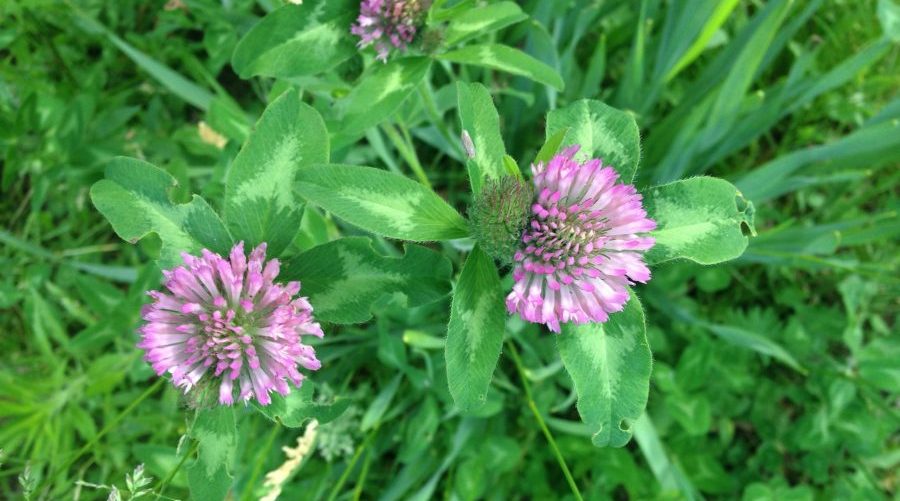
Red Clover (Trifolium pratense): This has a nice fuzz of minerals alongside gentle phytoestrogens that may reduce the bone loss effects of wavering, waning estrogen in peri- and post-menopause. It tastes nice in tea but be sure it’s been promptly and properly dried and good quality. Safety in estrogen-dependent cancers is unclear and controversial at this time.
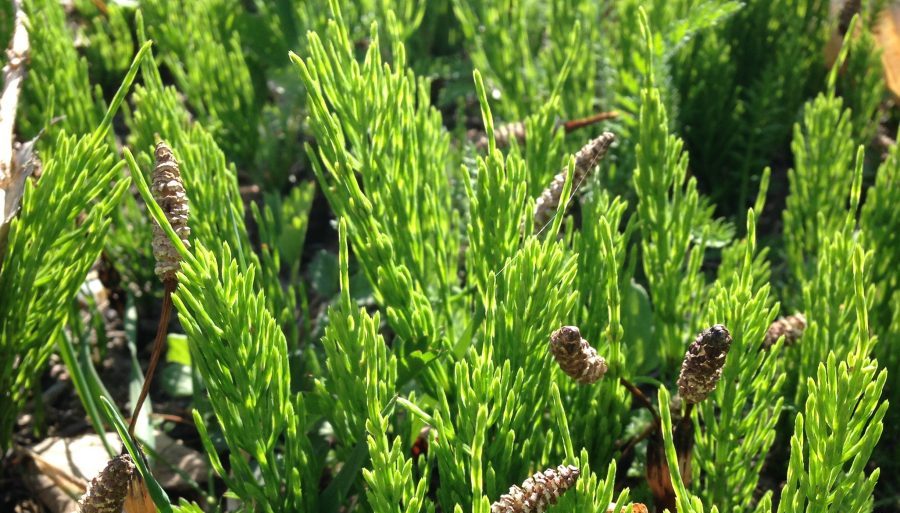
Horsetail (Equisetum arvense): This ancient spring plant grows near waterways and is our most dense source of silica, and important mineral for all types of connective tissue including hair, skin, nails, bone, joints, cartilage, collagen, elastin, and keratin. Within a matrix of other nutrients and compounds in the body, silica provides flexibility, strength, resilience, and resistance to breakage. Ensure good quality horsetail from clean watersheds and dry or cook for use. Its texture is too tough to eat, so you’ll need to use powder or strain it out.
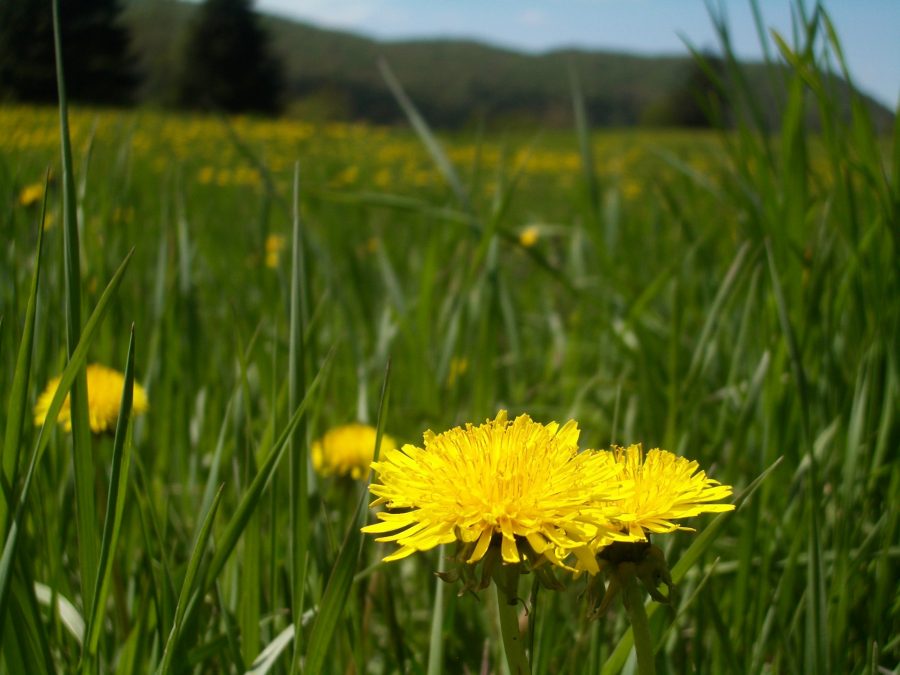
Dandelion (Taraxacum officinale): Dandelion leaves give nettle a run for its money in terms of calcium density, and it’s also rich in complementary minerals including potassium and magnesium. Dandelion is bitter-tasting, which makes it a little more challenging in recipes but also helpful in improving digestive prowess so you’re better able to absorb the minerals you eat in your food. It is also quite diuretic – the French name for dandelion translates to “pee the bed” – and supports liver detoxification as well.
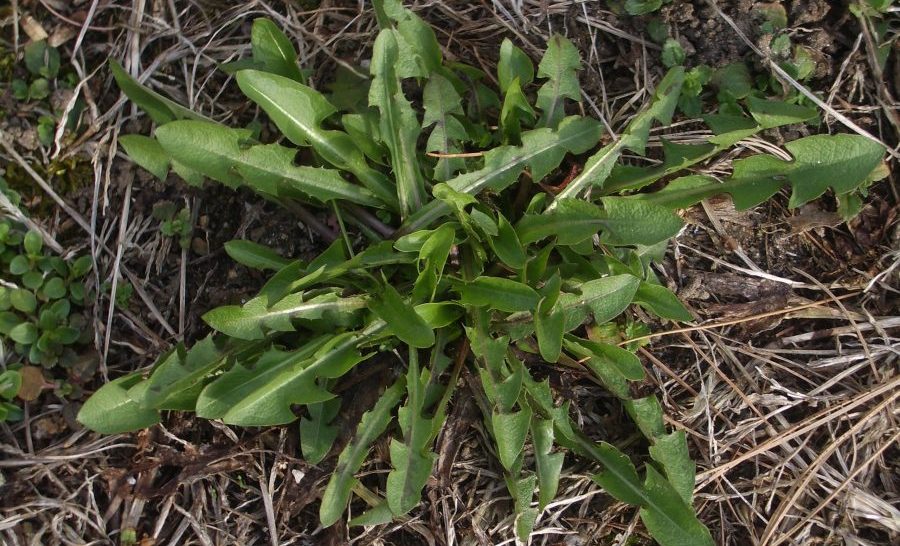
Seaweed of various types tend to also be rich in calcium and minerals; however, their high iodine content makes them unsafe to consume in large doses. (A tiny bit of iodine at 150 mcg or less per day is good. Moderate to high amounts of iodine are not and can really do a number on the thyroid, from causing hyperthyroid storm to aggravating an autoimmune state that can trigger both Grave’s hyperthyroid and Hashimoto’s hypothyroid diseases.)
General Cautions: Herbs that bioaccumulate beneficial minerals can also bioaccumulate heavy metals including lead, so use plants from clean soils and waterways only. If purchasing, ask companies for heavy metal testing results. Also be aware that these herbs can ferment or spoil easily in tea form. Use up tea quickly. If you have a weakened immune system or histamine intolerance condition, consider sticking to high-heat extraction such as decoction rather than a long, on-the-counter long-steeped infusion and consume immediately.
Extracting Minerals in is Tricky!
First, there’s the simple aspect of quantity. The nettle in a typical tea infusion dose (a teaspoon or so of dried herbs) would only contain 40 to 80 mg of calcium tops. But a whole ounce of nettle could have approximately 800 mg of calcium. But then we have to ask how much actually gets extracted into our solvent of choice. We don’t have a lot of data to go by, but the answer is, not much. Minerals are hard to extract. They are like rocks embedded in the plants. Interestingly, while we have very little scientific data on minerals from herbs, many herbalists report excellent results from herbal teas, capsules, vinegar, etc. even though dose-wise, they’re probably not enormous in their mineral content. There’s likely more to these herbs for our health than just mineral content.
Tea: Water isn’t terrible, but it’s also not great at extracting minerals, It takes some effort and still won’t get all of the minerals out. But what you do get is very bioavailable (which matters because typical calcium from plants and food is hard to absorb, only 5 to 50% or so gets absorbed by the body from most foods). A quick infusion gets just a fuzz. In a study of this type of infusion (2 grams of dried nettle steeped for 7 minutes), only 15-20% of nettle’s calcium extracted in the tea, which equated to a measly 4-6 mg of calcium. Decoctions (including broth) and strong nourishing infusions will extract much more, but not all, and they’ll be even more meaningful if you start with a lot more plant material. Likewise, strong syrups and concentrated liquids can also provide a good amount of minerals. Strong Nourishing infusions are popular, but decoction (simmering versus steeping your herbs in water) are actually the most potent way to extract minerals, even from leafy material.
Vinegar: This does quite a nice job extracting minerals, as solvents go. But your dose is not going to be very high, perhaps a teaspoon. Mineral-rich herbs like nettle and dandelion leaves are popularly extracted in raw apple cider vinegar to take by the spoonful or use in salad dressing.
Eat the Plant: This is an excellent way to get your minerals! Capsules will give you small doses while adding spoonfuls of powder to food, fresh leaves (where appropriate) for smoothies and salads, juicing, cooking, and making pesto will give you bigger doses.
Use mineral-rich herbs as…
- Strong Nourishing Infusions (see recipe at end) and strong teas
- Decoctions, Simmered in Broth
- Added to food, powders in smoothies, pesto
- Maybe as an infused vinegar
Note that alcohol is not a good solvent for minerals, though you may get other benefits from herbs in this format. So, don’t tincture these herbs for their mineral content. The spagyric-style tincture would provide some minerals as it involves burning the marc (discarded tincture dregs) down to ash and then adding that mineral-rich ash into the tincture bottle. Glycerine also isn’t a very good way to extract unless you use it more as a preservative for a concentrated, simmered syrup than as a regular infused glycerite.
My Favorite Mineral-Rich Herbal Recipes
Mineral Rich Strong Nourishing Infusion Tea
A strong nourishing infusion is made by steeping 1 ounce (by weight on a kitchen scale) of dried herbs in a 1 quart (32 ounce) container of hot water for 4 hours or overnight, then squeezing out tea to drink that day. French press pots are ideal for this. Refrigerate and drink promptly.
Some options:
- Plain nettle or plain oat straw
- 60% nettle + 40% oat straw
- 40% nettle, 40% oat straw, 10% red clover, 10% horsetail
- Flavor with about 10% peppermint, spearmint, lemongrass, chai spices, etc.
- Or mix 50/50 with prepared herbal chia when drinking
(My favorite herbal chai base is 2 cinnamon sticks, 2 cardamom pods, 1 star anise pod, and 5 cloves simmered for 20 minutes in 8-16 ounces of water. Also check out a more elaborate Nutri-Chai recipe further down.)
Nutri-Tea
A tasty and visually appealing blend of nutritious garden herbs. You can also increase the quantity (1 oz herbs) and steep time (4+ hours) to serve as a strong nourishing infusion. You can easily adapt the recipe with the herbs you have on hand. Raspberry leaf, horsetail, marshmallow leaves, violet flowers/leaves, holy basil, etc. are good additions, too. If you don’t like mint, add lemongrass instead. If you don’t like nettle, skip it and add more oat straw.
- 2 teaspoons nettle
- 1 teaspoon oat straw and/or tops
- 1 teaspoon red clover blossoms
- 2 teaspoons mint(s) of choice
- Sprinkle of calendula flowers/petals for color (optional)
Steep in 16 ounces of hot water for at least 30 minutes or as long as you like. Strain, sweeten with honey if desired, and drink.
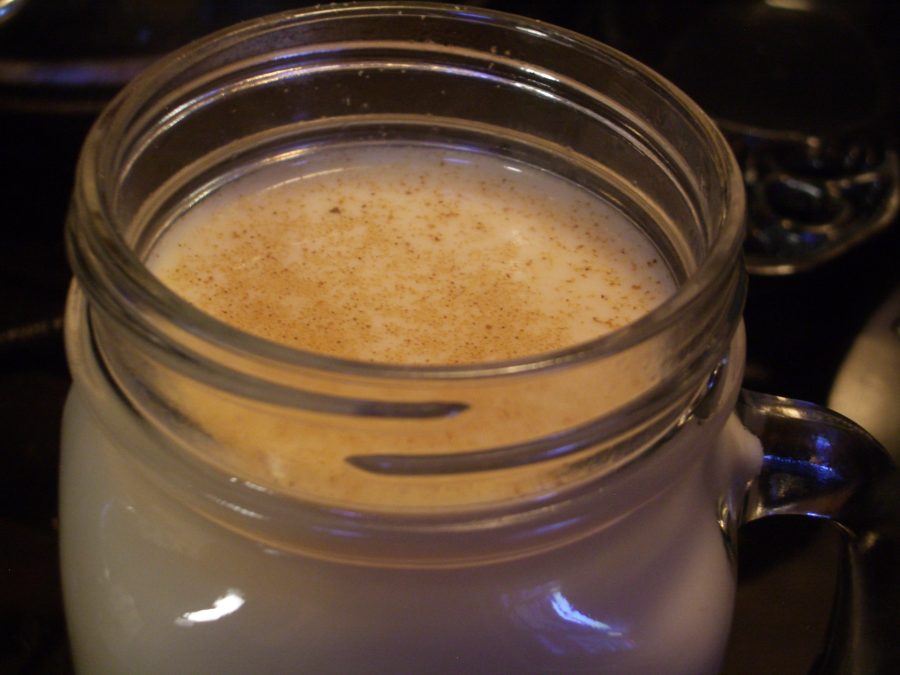
Nettle Oat Chai
If strong nourishing infusions that taste like spinach tea are a hard sell for you, consider making herbal chai instead. This is my own recipe, but it was inspired by the delicious nettle chai served by Rebecca Ross of White Lily Botanicals (formerly in Exeter). Feel free to adapt it to what’s in your spice cabinet. You can skip the oats, try different spices, and add tonic herbs like ashwagandha, astragalus, codonopsis, burdock, reishi mushroom chaga…
- 1 heaping tsp nettles
- 1 tsp oat straw
- 1 tsp oatmeal or quick oats
- A thin slice fresh ginger
- 2-3 cardamom pods, cracked
- 2 cinnamon sticks
- 5 whole cloves
- 1 whole star anise
- 1 pinch freshly grated nutmeg
- Sweetener and creamer to taste (optional)
Infuse all the above herbs in 8-12 oz of boiling water. Let sit for 1/2 to 1 hour before straining. (You can infuse for less time, but the flavor will be weaker.) Strain, reheat if necessary, and add the sweetener and creamer to taste. This is particularly yummy with whole cow’s milk or barista-style oat milk and maple syrup (especially if you’re still learning to enjoy herbal flavors).
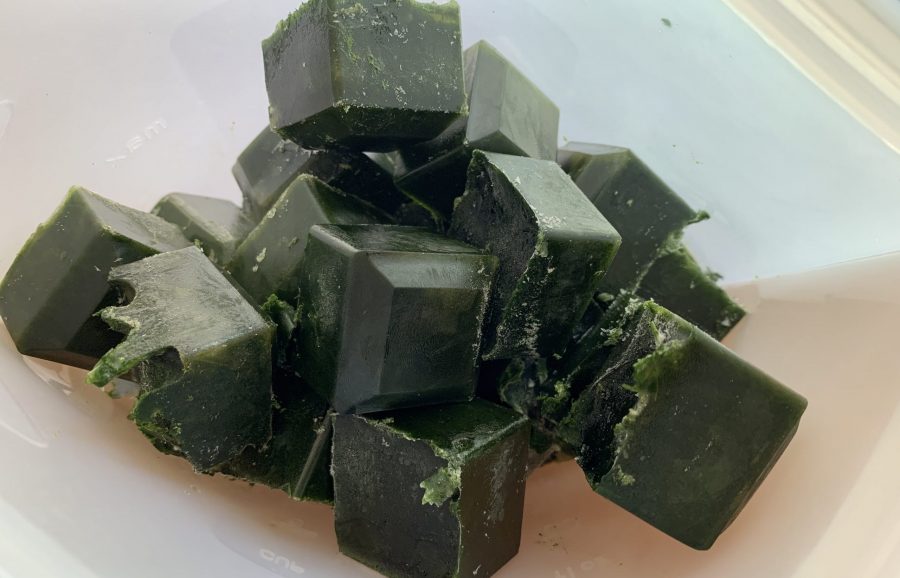
Verdant Nettle Ice Cubes
Make these convenient nettle ice cubes. Once cooked and frozen, they don’t sting!
- Use young spring nettles (remove the leaves from the stems and discard the stems they are getting fibrous)
- Steam with just a little water until they cook down.
- Transfer to a blender and puree until smooth.
- Freeze in ice cube trays
- Transfer to freezer zip bags.
- Great to add to soup, smoothies, pesto, and other recipes for a vibrant green hit of nutrition!
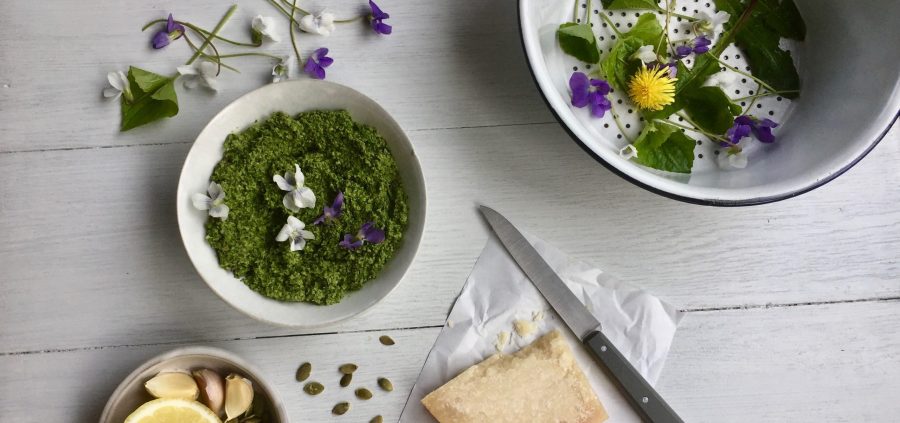
Dandelion Pumpkin Seed Pesto
Based on The Kitchn food blog. This is surprisingly good! Makes about 1 cup
- 3/4 cup toasted plain or roasted tamari pumpkin seeds (pepitas)
- 1-3 garlic cloves, minced
- 1/4 cup freshly grated parmesan (or nutritional yeast to taste)
- 1 bunch dandy greens (or ~2 cups, loosely packed mixed wild greens)
- 1/2 lemon juiced
- 1/4 cup extra-virgin olive oil
- Black pepper, to taste
- Salt to taste (not needed if using tamari pumpkin seeds)
Puree it all in the food processor. Serve with veggies or tortilla chips. Will keep 2-3 days in fridge (loses flavor and greens oxidize). Freezes pretty well.
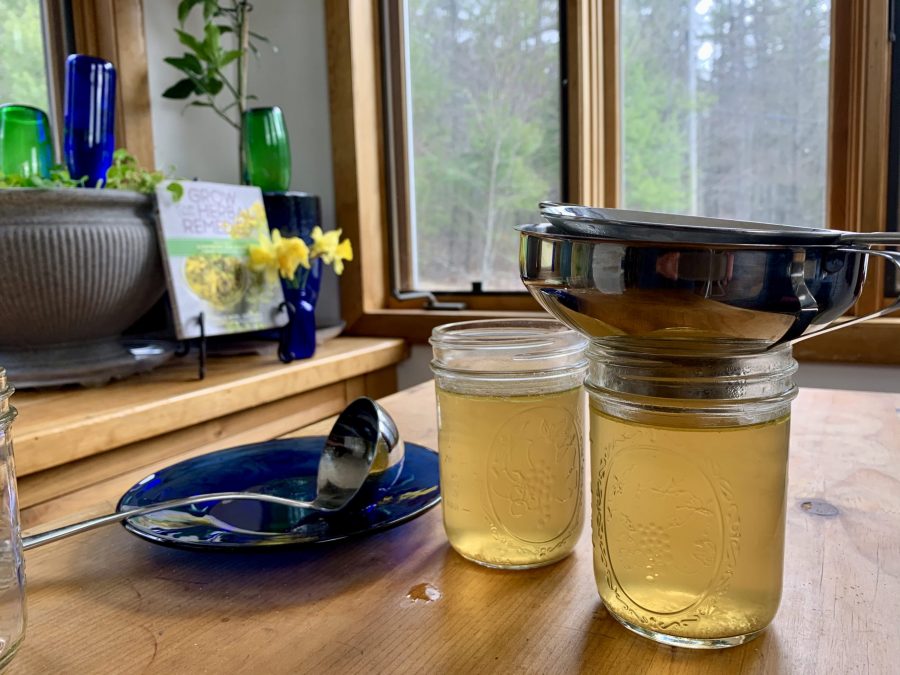
Simple Bone Broth
- Poultry carcass(es), small game, beef, or fish bones (use “clean” meat without hormones and preferably organic, local, and/or wild)
- Splash of raw apple cider vinegar
- Some salt, optional
- A tablespoon or two each (optional): nettles, oat straw, horsetail, shiitake mushrooms…
Cover with water and simmer all day. Strain, freeze extras.
Also see my other blog posts on freezing canned broth and single-serving soups and making herbal broths in general.
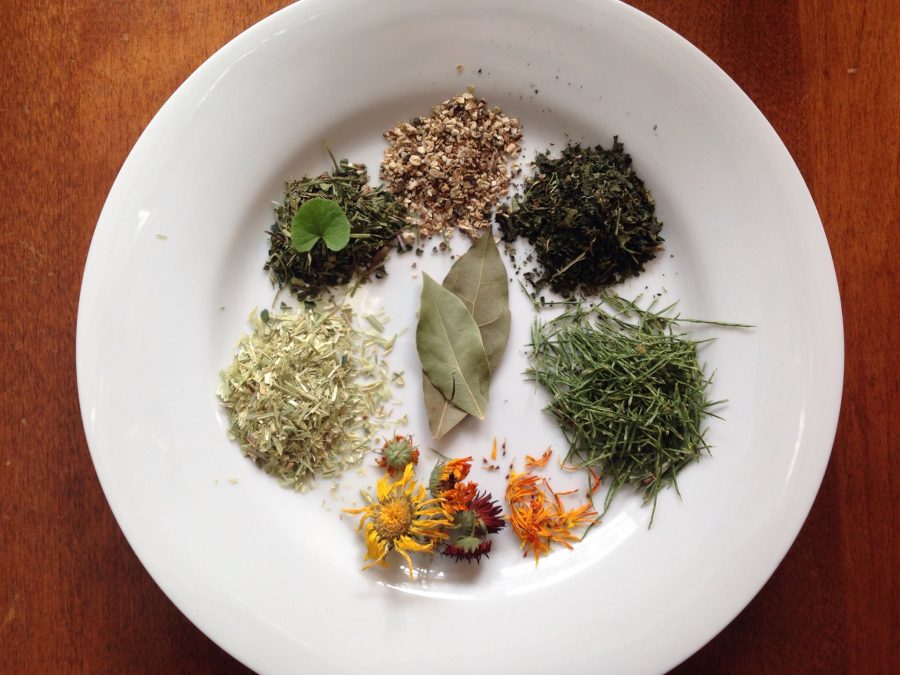
Learn More
In my article on Strong Bones by the Decade for Taste for Life magazine, which you can read for free online here, I touch on some of these herbs as well as general lifestyle tips.
I go far deeper in to the herbs in my Herbal Academy Herbarium article Strong Bones, Naturally (you will need to become a paid subscriber to access the article on this link).
Clinical herbalist Maria Noël Groves sees clients and teaches classes at Wintergreen Botanicals Herbal Clinic & Education Center in Allenstown, New Hampshire.
The statements made on this blog have not been evaluated by the FDA and are not intended to diagnose, prescribe, recommend, treat, cure, or offer medical advice. Please see your health care practitioner for help regarding choices and to avoid herb-drug interactions.

